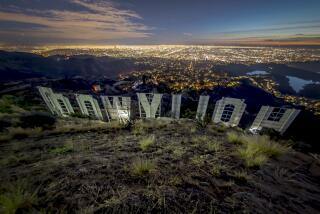DISCOVERIES
- Share via
VALERIA BELLETTI, the daughter of Italian immigrants, was 26 when she first came to California on a sightseeing trip with her girlfriend in 1924. Irma Prina returned to New York, but Belletti stayed, fell in love with Southern California and worked for several years as a secretary for movie mogul Samuel Goldwyn.
Those were the years when Hollywood was left to Jews and women, writes Cari Beauchamp, who edited Belletti’s letters in “Adventures of a Hollywood Secretary.” Belletti’s starting pay was $40 a week, which thrilled her (although in the same year, Goldwyn paid screenwriter Frances Marion $2,000 a week).
Belletti hiked the Sierras, rode horses and swam in the ocean. “I don’t know whether it is the sunshine or just what it is, but I feel much more carefree and lighthearted,” she wrote Prina. “You need to come to live in California. It will make you feel young. Since I’ve been here, I’ve lost ten years. I feel so wonderful, carefree and perhaps a little romantic.”
Belletti was, with some difficulty, able to get along with the notoriously abrasive Goldwyn; she loved the movie stars but was unimpressed with most people she met in Hollywood. “Everybody is so temperamental and childish in this business,” she wrote. “My work is really hard. I have to talk, talk, talk all day long.”
Belletti prided herself on her prudishness; she was always on the lookout for someone with husband potential. She was focused and independent and was able in four years to save enough money to buy a two-unit Spanish-style Hollywood bungalow for $13,500. (She put down $4,000 in cash.)
“My ambitions,” she wrote Prina in 1928, “are all changed.”
By the time Belletti left Hollywood for married life and Santa Barbara, the talkies were on the way in and men were scooping up the high-paying jobs.
“Adventures of a Hollywood Secretary” is not the place to get the inside studio story or even new information on the studios in the late ‘20s (Belletti was a bit of a company girl). Its appeal lies in the author’s wide-eyed delight with her “Adam-less paradise,” the life of a working girl, the calla lilies in bloom, the big yellow moon and the smell of orange blossoms.
More to Read
Sign up for The Wild
We’ll help you find the best places to hike, bike and run, as well as the perfect silent spots for meditation and yoga.
You may occasionally receive promotional content from the Los Angeles Times.





